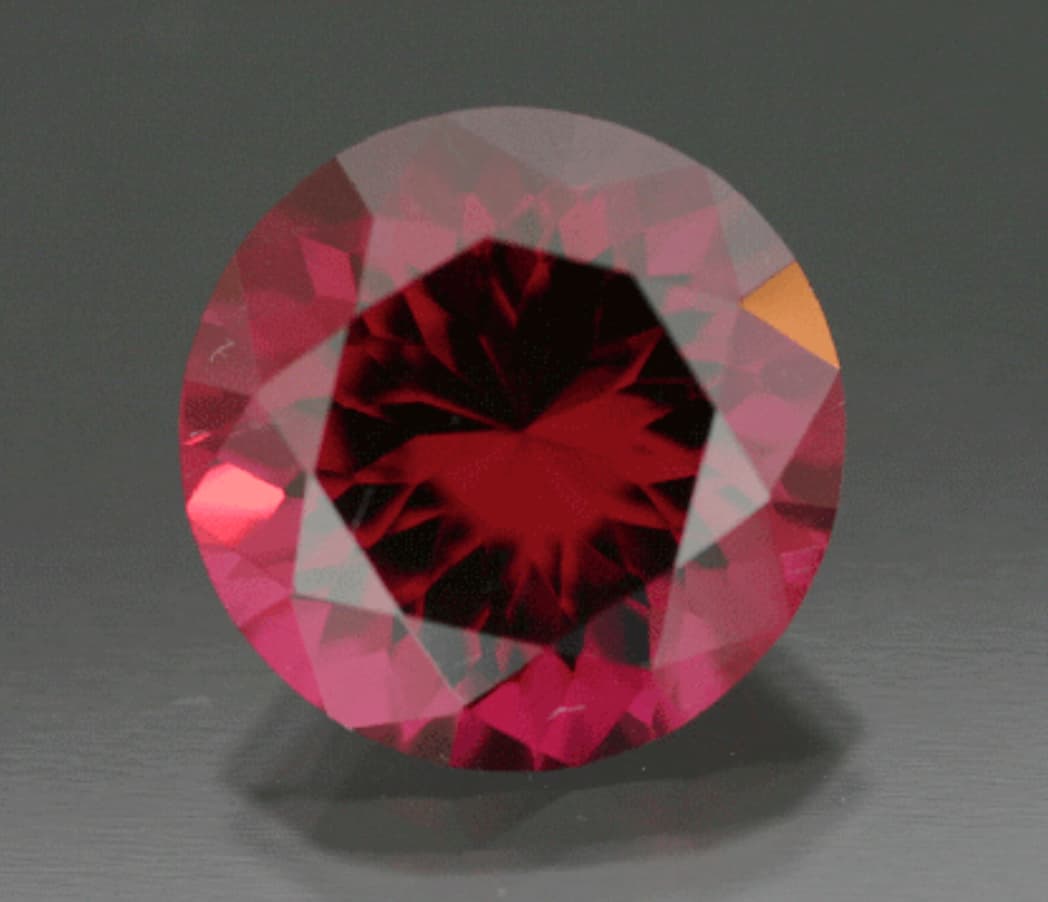Rhodolite Garnet Value, Price, and Jewelry Information
Rhodolites are purplish red garnets, a blend between almandine and pyrope in composition. These durable gems have become popular jewelry stones.
2 Minute Read
Rhodolites are purplish red garnets, a blend between almandine and pyrope in composition. These durable gems have become popular jewelry stones.
Start an IGS Membership today
for full access to our price guide (updated monthly).Rhodolite Garnet Value
Comments
Although gemology texts have traditionally described rhodolites as one part almandine and two parts pyrope, garnets never have just two species in the mix. Small amounts of other garnet species, like grossular and spessartite, are always present in rhodolites. In fact, the higher the spessartite content, the lighter the rhodolite's color. Nevertheless, the purplish red hue distinguishes rhodolites, not the tone or saturation levels.
Rhodolites can range in color from purplish red to reddish, almost pure purple, and specimens that resemble amethyst in color have been found in North Carolina and India. However, most gem-quality rhodolites have a purplish red color.
Not all purplish red garnets are rhodolites. A chemical analysis is required first to determine if a stone of that color is an almandine-pyrope mix.
Rhodolite gemstones are affordable and make great options for engagement rings as well as January birthstone jewelry.
Identifying Characteristics
Rhodolites may have a strong to very strong reaction to magnetism. Although testing magnetic reactions isn't a basis for a positive gem identification, it can help make quick separations between gems of similar appearance.
Gem-quality rhodolites typically have no eye-visible inclusions and, therefore, usually receive the highest clarity grade for Type II gems, which includes all garnets.
Material from the North Pare Mountains, Tanzania, (N = 1.765; SG = 3.88) may show a color change, blue in daylight to purplish red in incandescent light, similar to alexandrite. Note that some color change garnets mined in the Morogoro region of Tanzania in 1988 were long considered rhodolites but were later revealed to be pyrope-spessartite, a more typical variety for color change garnets.
Rare examples of asterism (the "star stone" effect) may occur in rhodolites from East Africa.
Synthetics
Geologists have synthesized almandine-pyrope garnets via the hydrothermal method for research purposes. While some of this material may appear for sale as gemstones, this process is too expensive for regular commercial rhodolite production. With rhodolites of exceptional clarity, gemologists should look for telltale signs of hydrothermal growth, such as seed plates, under high magnification.
See the "Synthetics" section in the main garnet gem listing for more information on other lab-created garnet varieties.
You may find many so-called "synthetic rhodolite" gems for sale online. However, these products may actually be simulants, such as glass or colored cubic zirconia (CZ) lookalikes, rather than synthetics. In these cases, merchants use the term "synthetic" in the popular sense, meaning "not real," instead of the gemological sense of a lab-created analogue to a natural gem.
Enhancements
Rhodolites typically receive no gem treatments. However, in an experiment from 1997, rhodolites turned orange and brownish red and even developed a metallic coating from heating.
Sources
The principal sources for gem-quality rhodolites are Brazil, India, Madagascar, Sri Lanka, Tanzania, and Zimbabwe.
Other notable gem sources include the following:
- Afghanistan; Austria; Canada; China; Ethiopia; Kenya; Mozambique; Myanmar; Russia.
- United States: Alaska; North Carolina (rhododendron red, lilac, pinkish).
Stone Sizes
The type locality for rhodolite (Cowee Creek, Macon County, North Carolina) usually produces very small stones, 1-2 carats and under. However, finds in Africa have yielded gems over 75 carats.
- Smithsonian Institution (Washington, DC): 74.3, 22.1 (Tanzania); 16.5 (North Carolina).
Care
With no cleavage and a hardness of 7-7.5, rhodolites make durable stones for any type of jewelry setting. However, take care when cleaning these gems. Although a rhodolite may have no eye-visible inclusions, smaller inclusions may burst due to extreme heat or ultrasound and fracture the gem. Avoid mechanical cleaning systems and stick to a soft brush, mild detergent, and warm water, instead.
See our gemstone jewelry care guide for more recommendations.
Joel E. Arem, Ph.D., FGA
Dr. Joel E. Arem has more than 60 years of experience in the world of gems and minerals. After obtaining his Ph.D. in Mineralogy from Harvard University, he has published numerous books that are still among the most widely used references and guidebooks on crystals, gems and minerals in the world.
Co-founder and President of numerous organizations, Dr. Arem has enjoyed a lifelong career in mineralogy and gemology. He has been a Smithsonian scientist and Curator, a consultant to many well-known companies and institutions, and a prolific author and speaker. Although his main activities have been as a gem cutter and dealer, his focus has always been education.
Donald Clark, CSM IMG
International Gem Society
Related Articles
Garnet Buying Guide
Precision Faceting A Story Gemstone: Choosing Rough
Identifying Garnets Simplified
Scheelite Value, Price, and Jewelry Information
Never Stop Learning
When you join the IGS community, you get trusted diamond & gemstone information when you need it.
Get Gemology Insights
Get started with the International Gem Society’s free guide to gemstone identification. Join our weekly newsletter & get a free copy of the Gem ID Checklist!
